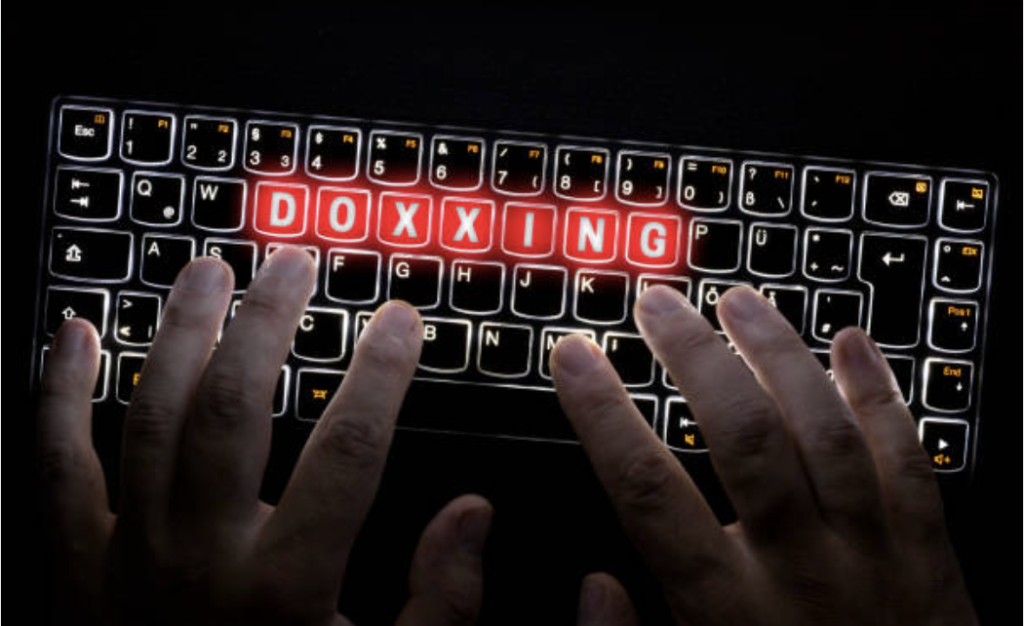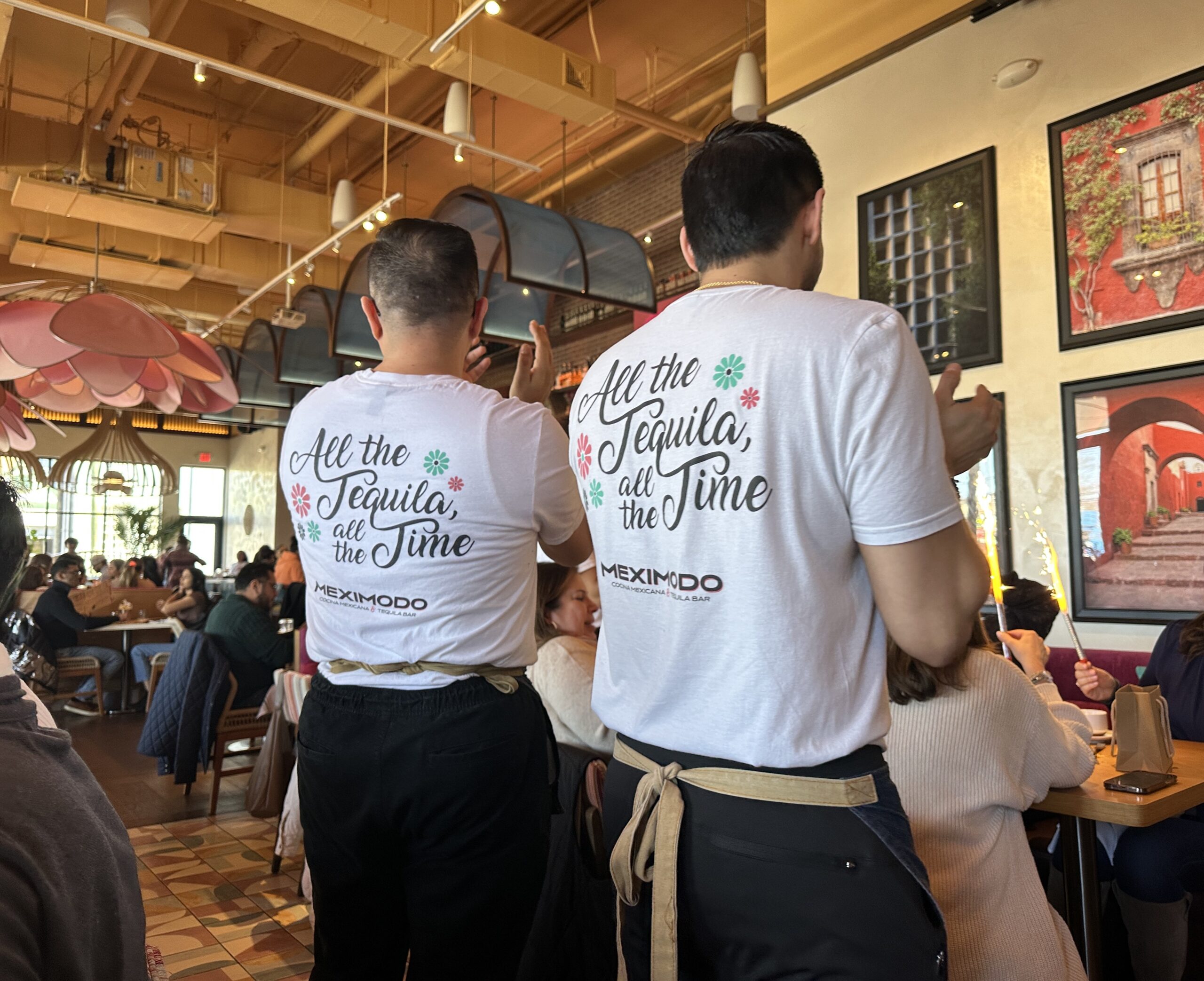(FORT LAUDERDALE, Fla.) — I’ll be honest right off the top here — I don’t mind getting into it on social media. I’m a Libra. I have strong opinions and a very clear sense of right and wrong, especially in certain areas. I don’t see a lot of grays. At the same time, I always keep my discussions to the subject at hand and do NOT get overly personal. I’m happy to say that more often than not, healthy respect is given. I often ‘agree to disagree’ after salient points and counterpoints are exchanged and acknowledged.
That’s why I was a bit shocked when I got ‘doxxed’.
After one particular exchange surrounding the immigration policy of former President Donald Trump, I was alerted by another user that my employer, my FULL name, address, phone number, and SSN were posted on social media. I reported the ‘doxxing’ to this particular site and while the account holder was suspended and the information removed within 24 hours, it was a very long 24 hours and left me wondering who may have grabbed that information for nefarious purposes. As it turns out, nobody has up to this point and it was years ago so I think I’m ok (nobody amplified it thankfully) but that isn’t always the case. Just ask journalists like Taylor Lorenz, whom we’ll get to in a bit but first, let’s make sure we’re accurately defining what doxxing is.
“Doxxing is a deliberate act where you do something to intimidate somebody,” said Kelly McBride, chair of the Craig Newmark Center for Ethics and Leadership. “It’s having your personal information shared among a bunch of ill-intended people so that you are then harassed and intimidated.”
That’s what my ‘doxxer’ was hoping would happen, simply because I voiced an opinion they didn’t agree with. For me, the consequences weren’t nearly as severe as they have been for others, like the aforementioned Lorenz, who has openly spoken about the trauma and disruption, both physical and emotional, that harassment and intimidation have caused her. Emily Dreyfus did a piece back in March of this year documenting the various forms of harassment Lorenz has received. The irony though in Lorenz’s case is that shortly after she broke down on national TV over the PTSD she has suffered, she was accused of ‘doxxing’ someone herself — and received even more harassment.
But here’s the thing: she didn’t dox anyone. That is where the media is getting things wrong, and that is causing confusion in the public about what ‘doxxing’ actually is. So, let’s look at three instances where supposed ‘doxxing’ occurred and determine whether it in fact did. Hopefully, at the end of it, you’ll have a better understanding of how the term is being misused in journalism and correct it in your own writing and reading.
Taylor Lorenz & LibsOfTikTok
Let’s start there, with the Lorenz ‘doxxing’ that wasn’t.
It all started with former New York Times and now Washington Post Technology reporter Taylor Lorenz, who did an investigative piece on who was behind the @LibsofTikTok Twitter account. The piece correctly revealed the owner was Chaya Raichik, a Brooklyn real estate agent, by linking to her real estate license, which contained her home address.
Lorenz and WaPo were widely criticized for her Libs of TikTok story, with the Post eventually removing the real estate license information, something critics said was an admission of guilt. The Post said in a review of the article, that they deemed the link ‘unnecessary’ but pointed out that Raichik’s personal info was publicly available, something that had previously been reported on by Claire Goforth of ‘The Daily Dot.’ However, Goforth did not reveal the exact identity of the user.
The argument made against Lorenz, in this case, was that she was being hypocritical in complaining about how online harassment has made her contemplate suicide and caused her PTSD but is then opening someone else up to the same harassment by publicly revealing who they are. The difference here though is that Lorenz’s revelation did not carry malicious intent, it was simply an unintended consequence of her reporting.
“I think she was trying to reveal that this person existed and provide evidence,” McBride said. “I don’t think she realized that her address was there. I think she found the license and linked to it to demonstrate the depth of her research.”
There were plenty of people on the right who disagreed, including Pulitzer Prize-winning journalist and author Glenn Greenwald, who tweeted out:
“Fucking unbelievable: @TaylorLorenz, after sobbing on national TV 2 weeks ago, claiming she’s the victim of ‘harassment,’ showed up at the house of the relatives of the citizen behind @libsoftiktok and badgered them, according to @libsoftiktok.”
As a journalist, one would hope that Greenwald would know that some reporters do go and knock on people’s doors, and simply doing so for a story is not ‘harassment.’ Frankly, comments like this are incorrect and irresponsible and simply add to the confusion of what ‘doxxing’ truly is — and what harassment truly is for that matter. McBride said that’s one of the issues.
“The way that we convey meaning as journalists are we are precise with our terms. And so I do think that once you narrow down the definitions to the actual instances, I think you’ll find that it’s not doxxing,” she said. “I don’t see journalists doxxing people, that’s not what they’re doing. They’re being accused of it sometimes. But that’s not what they’re doing.”
Even with the error in linking the real estate license, a valid argument for including it is that Raichik operates an account that has become very influential among conservative media and has been featured and promoted by very influential sources like Tucker Carlson, Fox News, and the New York Post. With 600,000 followers at the time of Lorenz’s piece, the public has a right to know who is behind an account that is being featured by such prominent conservative voices and sometimes even driving the conversation. When you add to that the fact that the account posts things that could be construed as hate speech and racism (and has been suspended because of such things), there is no reason for the public not to know who is behind it.
For Raichik, the fallout hasn’t exactly been devastating. She has registered her account as a ‘media company’ and has seen her follower count more than double to over 1.3 million.
NFT Self ‘Doxxing’ Becoming Standard
In the world of non-fungible Tokens or NFTs, ‘doxxing’ is all the rage. But here again, it’s not literal doxxing, and especially not doxxing when it’s a self-reveal.
Even in the one case, we’ll discuss here where a journalist did reveal two anonymous people, it was not with malicious intent. It was simply another reveal through deep research and credible reporting.
To start, legitimate NFTs are typically set up and ‘founded’ by artists and people looking for investors in their work. Very often, those founders prefer to stay anonymous, using pseudonyms and avatars to protect their identities. Doing so also allows them to prevent hackers from accessing their work and digitally robbing them or their families. But being anonymous has also led to fraud. Lots of fraud. According to the site NFTnow.com, ‘rug pulls’ have become all too common. A scammer markets a particular type of NFT with growth potential promises and sampling, driving up demand and the price, and when it reaches its apex, the founder then shuts down the website and takes all the investor money, disappearing into the digital ether.
Veteran scammers are not easy to track down either. A recent analysis by the site Chainalysis reported, “NFT rug pulls resulted in more than $2.8 billion in losses, accounting for 37 percent of all cryptocurrency scam revenue for the year 2021, and a 1 percent increase from 2020.”
That brings us to the ‘Bored Ape Yacht Club’, or BAYC. Founded by two brothers in Florida, they created an art collection featuring 10,000 cartoon apes in various outfits and hairstyles. The NFTs were a massive hit, thanks to celebrity endorsements and purchases from the likes of Steph Curry, Madonna, Serena Williams, and Jimmy Fallon to name a few. The NFTs routinely fetch upwards of $250,000 each and are now the most lucrative on the market. Their market cap is now sitting at $2.8 billion. But until recently, no one knew who was behind BAYC. That changed when Buzzfeed reporter Katie Notopolous decided to find out and revealed who the two founders were via researching public records. When the backlash came, Notopolous, like Lorenz, was accused of ‘doxxing’ but once again we know this was not the literal case. She acknowledged in the piece that she was outing them, but justified it by saying “How do you hold them accountable if you don’t know who they are?”
Given the money involved in a venture like BAYC, it’s hard to argue with that when you compare it to other companies of similar value. The SEC requires corporations to divulge who their CEOs are and perhaps as a nod to potential regulation being looked at, some cryptocurrency exchanges are now mandating new NFT founders reveal their identities to administrators in order to do business in the marketplace, what the industry is calling ‘self-doxxing.’ In this case, it is added security for investors, who know the founders of featured NFTs are legitimate and can be held criminally responsible. While difficult to prosecute, cases are starting to pop up as the crypto market as a whole begins to regulate. With scams and thefts on the rise, those marketplaces want to ensure credibility not just for themselves but for investors and consumers.
As mentioned, Notopolous — and BuzzFeed — received plenty of negative reactions to their piece but the two founders, Greg Solano and Wylie Aranow, took it in stride and have come out no worse for wear, much like Raichik in our first example.
A Criminal Doxxing
The final example is a doxxing case that is ongoing and has resulted in a criminal investigation. Last month, while covering the corruption trial of former Israeli Prime Minister Benjamin Netanyahu, investigative journalist Eli Zipori tweeted out a photo of a witness’s house and accused her of hypocrisy. The photo contains her address. Hadas Klein, who is a key witness for the prosecution, filed a police report against Zipori for harassment. Law enforcement officials stated, “This is a clear violation of witness intimidation, it’s crossing a red line. It’s no wonder Klein feels threatened and harassed.”
Zipori’s unethical behavior has resulted in threats to Klein’s life and repeated harassment and attempts to intimidate on social media.
This one is an easy one to spot because, by the definition of doxxing, it is clearly an attempt by a journalist to encourage harassment and intimidation of a public person by revealing personal details of that person. The case involving Zipori is ongoing so there is no resolution as of yet but at least one person accused of harassing her has been questioned by police and had a restraining order issued against them.
Klein continues to face harassment and threats on social media.
A Call for Clear Distinction
There is widespread agreement that the ‘doxxing’ of private citizens just to curry online harassment, threats, and possible violence is ethically wrong. But the issue seems to be centered around the true definition of ‘doxxing.’ Because it is a term that carries such weighty consequences, getting that definition right should be a priority for journalists. In two of the three examples, the reported ‘doxxing’ is not doxxing at all. It’s journalism. The articles I’ve linked to are only a handful of examples where the term is being used more as slang than by its actual definition but the public doesn’t know the difference.
McBride may disagree, “I do think the public knows the difference. I mean, I think young people know exactly what it is right, they’ve grown up with it. So they know what it is.”
But she’s giving the public too much credit, as a cursory search on any online reactions to stories accusing a journalist of doxxing someone when they are actually just doing their jobs easily proves the public does not know the difference. That’s where journalism instruction needs to change and newsrooms need to make sure their journalists are aware of what it is, what it means, and how to properly report on it because failing to do so is damaging public perception of ACTUAL journalism.
Luis Miguel Echegaray is an adjunct professor at the Craig Newmark School of Journalism and he teaches his students how to use social media and digital tools for their journalism. Echegaray said he doesn’t necessarily discuss doxxing but agrees journalists need to know exactly what it is and how it can impact them and their reporting.
“Young journalists need to understand that freely releasing this type of information without consent or understanding is extremely dangerous and can lead to being subject to criminal intent,” Echegaray said. “We use social media so much that you may be doing it sometimes without knowing.”
That’s why understanding what it is and reporting on it properly when it does or does not occur is becoming more and more important in journalism, not to mention knowing what to do when it happens to you or someone you know. But we’ll leave that for another article.


